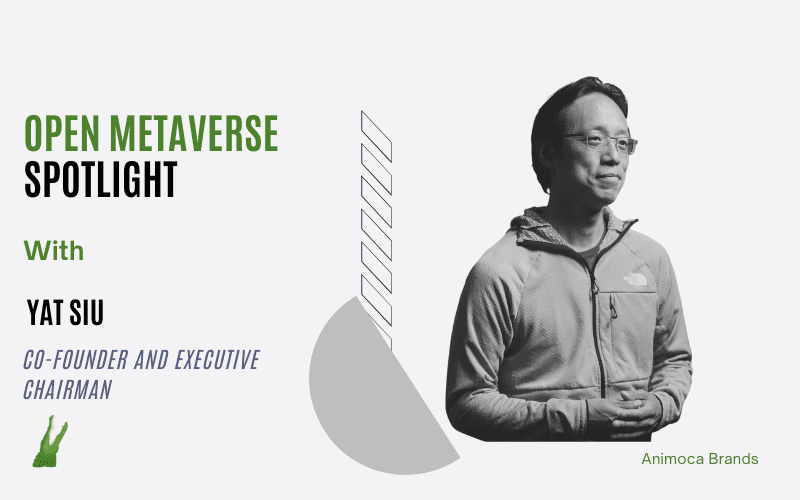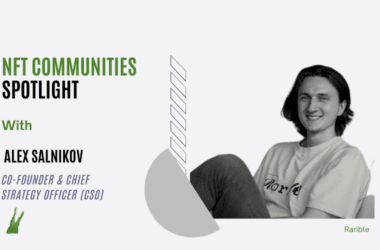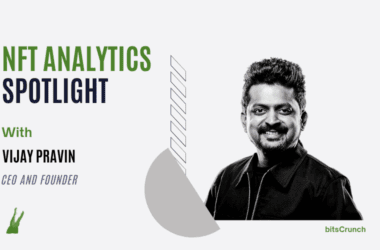Quick take:
- In this Q&A, Yat Siu explains what his company looks for when investing in startups.
- He also touches on the current market downturn and rising tech layoffs.
- And gives an opinion about where he sees the metaverse industry and web3 in five years.
Industry experts can’t seem to agree on the accurate description of the metaverse. However, there is one thing all those who claim to be building the metaverse seem committed to promoting. It has to be an open metaverse. Epic Game CEO Tim Sweeney is the latest to echo those words.
But Sweeney wasn’t the ‘fire starter’. In fact, like several mainstream tech companies, Epic Games arrived relatively late.
So what is the open metaverse, and who is spearheading the mass adoption of users?
The metaverse is generally described as an immersive virtual space composed of 3D worlds where people can engage in activities like gaming or creating digital twins of real-life environments. This can be done both on a web2 platform or a web3 application.
The open metaverse is built on decentralised platforms enabling user ownership through digital property rights. Last year, some of the leading players in web3 teamed up to form the Open Metaverse Alliance (OMA3) to help promote interoperability between platforms.
Gaming has emerged as one of the most sought-after products in the metaverse, with consumer-facing brands offering gamified experiences to their customers to unlock exclusive benefits.
Just to mention a few, Kids Foot Locker, Doritos, and H&M are some examples of consumer-facing brands that have launched gamified metaverse experiences in pursuit of increased engagement from their customers.
Animoca Brands, the company leading the campaign for the open metaverse and digital property rights has been ramping up its efforts to accelerate user onboarding.
The company recently revealed it is raising $1 billion for a new metaverse fund, which co-founder and executive chairman Yat Siu tells us discussions and negotiations are still ongoing with potential backers.
We asked Yat Siu what it takes for a web3 startup to gain Animoca Brands’ attention for potential investment in our latest Q&A, especially given the bear market.
Please tell us about yourself and the story behind Animoca Brands.
My name is Yat Siu and I am the co-founder and executive chairman of Animoca Brands. I was born and raised in Vienna, where I received classical music training before embarking on my entrepreneurial journey.
My career began at Atari Germany in 1990, and in 1995 I moved to Hong Kong to establish Hong Kong Cybercity/Freenation, which became the first free web page and email provider in Asia. In 1998, I founded Outblaze, a pioneer of multilingual white-label web services that received numerous tech awards. In 2009, I sold Outblaze’s messaging unit to IBM and shifted the focus of the company to incubating digital entertainment services and products.
One of those incubated companies was Animoca, a renowned developer and publisher of mobile games and edutainment apps for global audiences. Founded in 2011, Animoca released more than 300 apps across multiple platforms, with over 220 million game downloads. In 2014, Animoca spun off part of its games business into a new company named Animoca Brands to develop and publish games based on licensed content.
Tell us about that “Eureka Moment” when you decided to build the company around intellectual property rights and the open metaverse.
In 2018, Animoca Brands acquired a gaming company that was involved in the development of CryptoKitties, marking our first foray into blockchain gaming and NFTs. We had been discussing the acquisition since 2017, and one of its closely associated partners was Axiom Zen, which was developing CryptoKitties. We immediately saw the opportunity for NFTs to revolutionize the Internet by enabling digital property rights and shifting how the digital world operates. Based on that insight, we pivoted Animoca Brands to focus on NFT-based gaming, digital property rights, and the open metaverse.
Tell us about your criteria and process for investing in a startup.
Our investment criteria and process are rooted in our belief that blockchain and NFTs have the potential to transform the way we interact with digital assets. We have taken a comprehensive approach to seed the entire blockchain ecosystem, and so far we have invested in over 380 Web3-related companies and projects.
We are particularly interested in startups that have the potential to drive mass adoption of Web3 and contribute to the development of the open metaverse. This includes companies building metaverse worlds as well as those providing open assets that can be used in the metaverse (interoperability), such as virtual car manufacturers whose cars might be used in an unrelated racing game.
Our focus is on companies that prioritize openness and interoperability in their products and services. We prioritize investment in projects that support the growth of the open metaverse and facilitate the delivery of true digital property rights based on open and interoperable assets. This includes platforms and protocols such as Flow and Polygon, marketplaces like OpenSea, as well as consumer products like games and virtual worlds.
Your company has been leading the campaign for the open metaverse, where do you see the industry in five years?
If you chart the way that the Internet grew in adoption starting in the 1990s with the creation of the World Wide Web (Web1), then Web3 should hit a billion users within 5 years – but we think this will move faster. The obstacle to Web1 adoption was mainly physical, like internet connection quality and bandwidth, old or buggy modems, and generally low penetration of technology like personal computers that could network efficiently. But the obstacle facing Web3 adoption today is mostly one of user experience (UX), and that can be improved much faster than infrastructure. We believe that gaming alone will quite comfortably onboard the first billion users to Web3.
Given the several layoffs in companies involved in building the metaverse and web3 (Meta, Microsoft, Tencent, Coinbase etc), what’s your take on the job cuts and has Animoca Brands taken any downsizing measures recently?
Like most other organizations working in technology, especially in these turbulent times, we are optimizing for performance and alignment. We are always considering how we can better manage our operations to improve outcomes. Across our group, we were able to identify a few areas for optimization but so far cuts have been quite limited.
I can’t really speak as to why other companies made the cuts that they did. This is something that can vary hugely across companies. Job cuts can be driven by more than just cost-cutting: often it is necessary to refactor a business for new realities or significant market changes Sometimes certain roles become redundant following a merger or acquisition. It depends on each case.
How have you dealt with the current market downturn and has it affected your fundraisings or decisions on new investments?
In general, it’s safe to say that everyone is affected in some way by this market, including us. There’s definitely less venture capital than there used to be, but at the same time, I am very encouraged by the continued creation happening in Web3. We are going through a buyer’s market, which means that we can consider investment opportunities with less competition. And we’re definitely doing so because the Web3 business builders emerging in this tougher economic situation are stronger and more dedicated, the sort of people who will better tackle adversity.
You recently said Animoca Brands is raising $1 billion to invest in the open metaverse. Have you received any commitments from VCs yet and is there a tentative timeframe for when you plan to close the round?
That is in active discussions and negotiations.
Last July your company and others launched OMA3, a DAO created to develop metaverse standards. What is your take on DAOs in web3 community management?
We think DAOs are the future of most organizations, big and small. It’s the next evolution of business, allowing it to integrate the community into the organization. Ownership is powerful because it comes with benefits and governance over what you own. We also believe DAOs are going to reinvigorate democratic ideals because we will be able to iterate on democratic concepts at the speed of digital.
Anything else related to current events in web3 you would like to share with us?
NFT royalties became a bit of an issue but I think that with Mocaverse and our NFT licences, we have shown it is possible to protect royalties – which is critical since NFT royalties contribute to the lifeblood of the entire Web3 ecosystem. We’re using a combination of technological and legal approaches (the legal one is untested so far).
One thing that I keep noticing at NFT events I attend around the world is that the energy is positive, the motivation is ever-present, and the builder communities are strong. This is very encouraging.
****
Stay up to date:
Subscribe to our newsletter using this link – we won’t spam!





